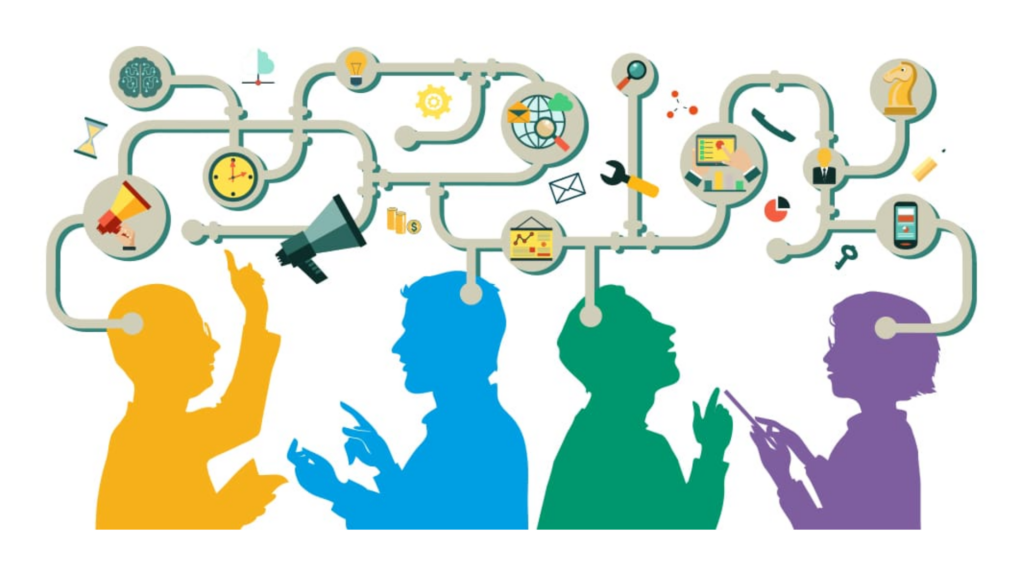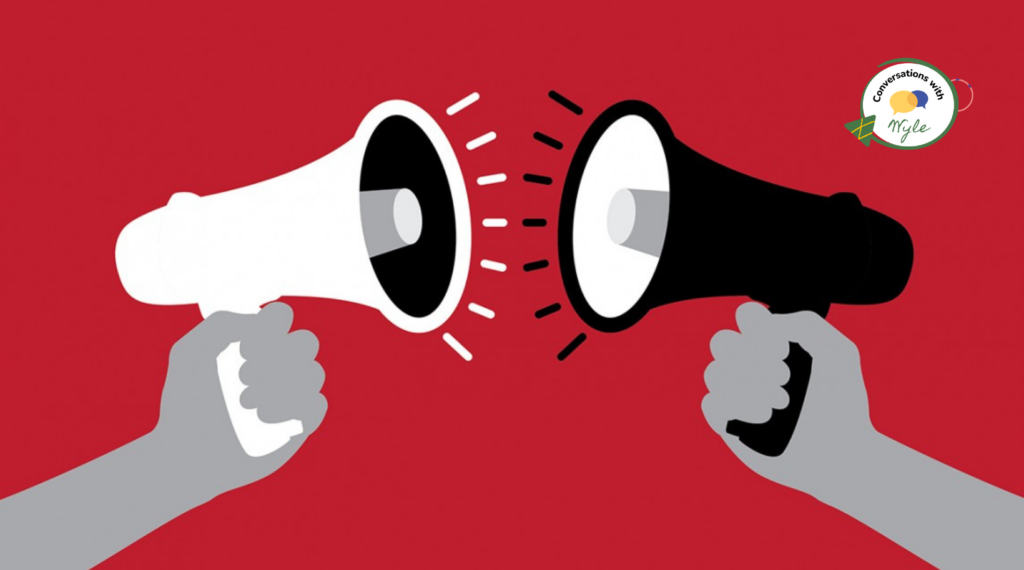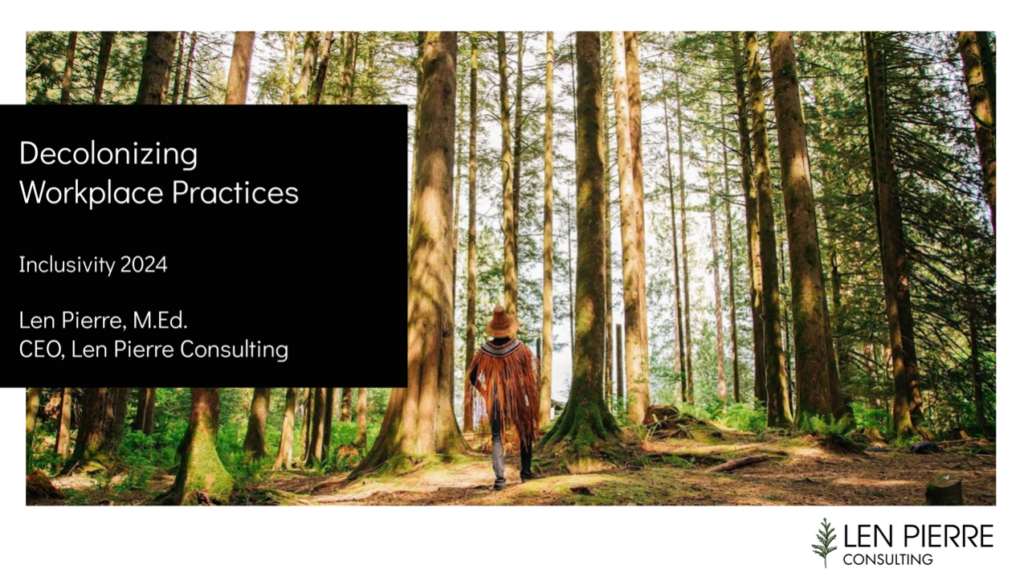At workplaces across Canada, people who identify as 2SLGBTQIA+ say they often have to “police” their actions and identity to avoid harassment and discrimination. Some even feel that being who they are could jeopardize their jobs. The result is stress and career-limiting effects for 2SLGBTQIA+ employees and a loss of potential, learning, and vibrancy within organizations.
“We all want to be seen, heard, and valued, and yet this is not the reality for many 2SLGBTQIA+ employees,” says Darryl Wright, facilitator of a recent webinar for Inclusivity. “Everyone has a role to play in creating safer workplaces.”
Discrimination in the Workplace
Members of the 2SLGBTQIA+ community face ongoing discrimination and harassment in the workplace:
- In one Canadian study, over a third of 2SLGBTQIA+ people reported being subject to bullying, threats, or hurtful or derogatory comments while at work.
- Gender diverse people are subject to 2–2.5 times as much harassment at work as cisgender men.
- Among transgender people in Ontario who transitioned at work, only one in five said that their colleagues were “consistently accepting” of them.
In all these ways and more, workplaces often remain unsafe places for members of the 2SLGBTQIA+ community. These risks can be increased if a 2SLGBTQIA+ person is also racialized or a member of another equity-seeking group.
Other Barriers to Inclusion
2SLGBTQIA+ people may be excluded or marginalized through biases built into the day-to-day operations and social interactions within a company:
- Dress codes, forms, and information systems can all rely on exclusionary, binary-based (male/female) categories.
- Microaggressions based on heteronormative assumptions contribute to feelings of an “unsafe” workplace.
- 2SLGBTQIA+ employees who are out regularly face social exclusion and are less likely to be invited to events.
Lack of washroom access in the workplace is a significant barrier to inclusion for transgender people. In a large-scale US survey, almost 60 percent of transgender people report avoiding washrooms. Twelve percent of trans people reported being harassed in washrooms and 24 percent report being told that they are using the “wrong” washroom.
The Effects
Many 2SLGBTQIA+ people feel that they must “police” their behaviour and identity in the workplace. They face constant decisions about what parts of themselves they can safely share.
Studies show that around half of 2SLGBTQIA+ people remain closeted at work. The lack of opportunity for people to be their real, full selves at work can have several negative and career-limiting effects:
- Higher stress, which can take a toll on physical and mental health.
- Fewer opportunities for networking and connections and, as a result, career advancement.
- Lower job satisfaction and overall commitment to the organization.
High numbers of 2SLGBTQIA+ workers report feeling unhappy or depressed at work.
Discrimination and barriers have serious economic impacts for the 2SLGBTQIA+ community as a whole. People in this community face higher unemployment and lower income (41 percent of 2SLGBTQIA+ people in Canada have an annual income of less than $20,000). They are also twice as likely as non-2SLGBTQIA+ people to experience homelessness or housing insecurity in their lifetimes.
Creating Safe, Inclusive Spaces for the 2SLGBTQIA+ Community
There are several steps that anyone can take to advance equity and inclusivity for 2SLGBTQIA+ people within workplaces.
- Recognize that discrimination is systemic and built into the daily running of workplaces. Be willing to re-examine all aspects of the company and your role with an eye to making building a more inclusive space. For example, do your forms, policies and process documents include only the binary male/female options? Do you have processes and resources in your workplace to support people who are transitioning? Are your washrooms gender inclusive?
- Support the creation of a “Pride” employee resource group (ERG) and the recommendations it makes. These employee-led groups can be important safe spaces within an organization where 2SLGBTQIA+ people can support one another through dialogue and make recommendations for improving working conditions for members of this community.
- Use people’s correct pronouns. Calling people by their correct pronouns is a human right, included in the Human Rights Act. Allies should educate themselves about pronouns and be accurate in the use of the pronouns of their 2SLGBTQIA+ colleagues. (For more detail on pronouns, see our post on gender-inclusive language.)
- Demonstrate that you are safe. Your 2SLGBTQIA+ colleagues will evaluate your inclusiveness based on many ongoing interactions and your stance on inclusivity and social justice issues more broadly. Being vocal on issues such as racism, sexism, and ableism can show that you are an active ally. Including your own pronouns when you introduce yourself can also help demonstrate awareness.
- Avoid making assumptions. You do not know someone’s gender or sexual orientation by looking at them. You don’t need to know—you don’t need to figure it out and it doesn’t have to make sense to you. Just do not assume that anyone is straight or cisgender.
- Be willing to learn from your mistakes. Listen when people call you out, acknowledge when you make a mistake, and commit to do better. For this process to work, you must be curious and open-minded. You must also genuinely care about learning and being a good colleague to your 2SLGBTQIA+ coworkers.
- Remember that it is not up to your 2SLGBTQIA+ colleagues (or other people in the 2SLGBTQIA+ community) to educate you. What you’re asking could be triggering or traumatizing for them. The process requires that you commit to ongoing learning and educate yourself.
Organizations & Further Resources
Queer Events
History of the 2SLGBTQIA+ Movement in Canada
https://www.queerevents.ca/queer-history/canadian-history-timeline
Qmunity
https://qmunity.ca/education-training/resources/
The Trevor Project
https://www.thetrevorproject.org/resources/
Egale Canada
https://egale.ca/training-workshops/
For more information on this webinar, or more generally for support on how to tackle inequities in your workplace and build a culture of inclusion, visit www.inclusivityinsight.com or email [email protected]
This article is based on the “Pride at Work: 2SLGBTQIA+ Inclusion in the Workplace” presentation delivered on June 22, 2022 by Darryl Wright, Facilitator, Inclusivity with contributions from Kathleen Oliphant, Research Consultant, Inclusivity. To host a webinar on this topic in your organization, or community, please contact [email protected]
Sources
Data for this article comes from a series of 2021 reports by the Social Research and Development Corporation (SRDC), the Human Rights Campaign report A Workplace Divided, the Jasmin Roy Foundation’s LGBT+ Realities Survey, and the U.S. Trans Survey.






















